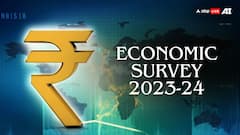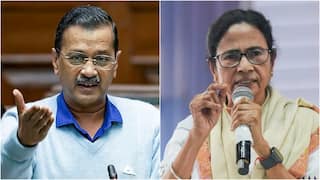Explorer
Advertisement
After Moody’s, Fitch Ratings Also Changes India’s Outlook To ‘Negative,’ Here’s How Downgrade Reflects On Current Economic Situation
The rating agency notes that pandemic has significantly weakened India’s growth outlook for this year and exposed the challenges associated with a high public-debt burden.

India is likely to record its worst growth performance since the 1991 liberalization. (Representative Image/ Getty)
New Delhi: The global outbreak of coronavirus has hit the global economies so hard that global rating agency Fitch Ratings on Thursday revised India’s outlook to ‘negative’ from ‘stable’, stating that the pandemic has significantly weakened the country’s growth prospects for the year and exposed the challenges associated with a high public-debt burden. Also Read: Govt Bans Chinese Deals & Gear For Telcos; BSNL, MTNL Not To Use Chinese Equipment In 4G Upgradation
The current rating has followed after the global rating agency Moody’s had cut the sovereign rating by a notch to lowest investment grade of ‘Baa2’ for the first time in 22 years.
What is the downgrade in rating?
The agency has revised the outlook on India’s long-term foreign-currency issuer default rating (IDR) to negative from stable and fixed the rating at BBB-. The economic activity is expected to shrink by 5 per cent in the fiscal year ending March 2021 (FY21) due to the strict lockdown measures imposed since March 25, and may rebound 9.5 per cent in FY22.
“The coronavirus pandemic has significantly weakened India’s growth outlook for this year and exposed the challenges associated with a high public-debt burden. The rebound will mainly be driven by a low-base effect,” the agency noted.
Why does the downgrade reflect?
Even before the pandemic broke, the financial sector was already reeling under weak business and consumer confidence and authorities had to deal with some high-profile cases over lapses in governance. Nonetheless, the banking sector's non-performing loan (NPL) ratio likely improved to 9.0 per cent in FY20 from 11.6 per cent two year earlier, according to the Fitch estimate, due to government capital injections.
It has noted that fiscal metrics have deteriorated significantly even as the government's expenditure was restrained, due to the impact of the severe growth slowdown on revenue, the fiscal deficit and public-sector debt ratios. Fitch expects general government debt to jump to 84.5 per cent of GDP in FY21 from an estimated 71.0 per cent of GDP in FY20.
The country's medium-term GDP growth outlook may be negatively impacted by renewed asset-quality challenges in banks and liquidity issues in non-banking financial companies (NBFC).
Also Watch: Here's why govt plans to ban Made in China 4G equipments
Follow Business News on ABP Live for more latest stories and trending topics. Watch breaking news and top headlines online on ABP News LIVE TV
View More
Advertisement
Trending News
Advertisement
Advertisement
Top Headlines
India
Cities
Celebrities
Science
Advertisement


Sayantan Ghosh
Opinion






































